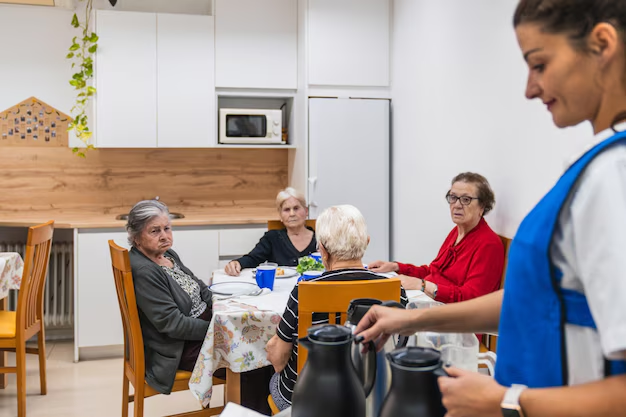Navigating Assisted Living in Baltimore City: A Comprehensive Guide
Choosing the right assisted living community is a significant decision that can influence the quality of life for older adults and their families. Baltimore City, with its rich history and vibrant culture, offers a variety of assisted living options tailored to meet diverse needs. This guide explores the ins and outs of assisted living in Baltimore City, providing valuable insights and practical tips.
Why Choose Baltimore City for Assisted Living?
Baltimore City, known for its dynamic neighborhoods and cultural diversity, provides a unique setting for assisted living. The city offers a rich tapestry of historical landmarks, recreational activities, and healthcare facilities, making it an attractive option for seniors seeking a vibrant yet supportive environment.
Benefits of Assisted Living in an Urban Setting
- Access to Healthcare: Baltimore features numerous top-ranking hospitals and specialized healthcare providers, ensuring that residents have quick access to quality medical care.
- Cultural and Recreational Opportunities: From the National Aquarium to the Baltimore Museum of Art, the city offers endless cultural and social activities.
- Public Transportation: Baltimore's public transit system provides easy accessibility, allowing seniors to maintain independence and stay connected to the community.
Understanding Assisted Living: What to Expect
Assisted living facilities aim to provide a balance between independence and support, helping residents with daily activities while offering recreational and social opportunities.
Levels of Care
Assisted living facilities typically offer a range of care levels. Residents may receive help with personal care tasks, such as bathing and dressing, medication management, and meals, depending on individual needs. It's important to assess current and potential future needs when choosing a facility.
Community and Lifestyle
- Social Engagement: Many facilities offer structured activities and events, fostering a sense of community and engagement among residents.
- Healthy Dining Options: Assisted living homes typically provide nutritious meal plans and accommodate dietary restrictions.
- Safety and Security: Facilities often include 24/7 security measures and emergency response systems to ensure residents' safety.
Cost Considerations
Understanding the cost of assisted living is crucial. Costs can vary based on the level of care, location, and amenities offered. It's wise to explore funding options like long-term care insurance and veterans' benefits.
How to Choose the Right Facility
Choosing the right assisted living facility requires careful consideration and research. Here are steps to guide you through this process:
Assessment of Needs
Begin by evaluating the personal needs of your loved one. Consider factors like mobility, medical conditions, and personal preferences. This will help you narrow down facilities that cater specifically to these needs.
Touring Facilities
Visit potential facilities to get a feel for the environment and observe the interactions between staff and residents. Pay attention to cleanliness, safety features, and the overall atmosphere of the community.
Questions to Ask
When visiting or speaking with a facility, consider asking:
- What levels of care are provided?
- What is included in the monthly fee?
- Are there additional costs for specific services?
- How are medical emergencies handled?
Transitioning to Assisted Living
Moving to an assisted living community is a significant life change, and preparation can facilitate a smoother transition.
Preparing for the Move
- Downsizing: Help your loved one decide on what personal belongings to bring. It's important for them to have familiar items to make the new space feel like home.
- Emotional Support: Acknowledge the emotional impact of the move. Encourage open conversations about feelings and concerns.
Settling In
Give time for adjustment. Encourage participation in community activities and establish a routine to help your loved one integrate smoothly into their new home.
Assisted Living Regulations in Baltimore City
Understanding the regulations and standards that govern assisted living facilities ensures your loved one receives quality care.
Licensing and Certification
All assisted living facilities in Baltimore City must comply with state regulations and maintain licenses. This ensures that facilities meet specific health and safety standards.
Inspection and Accountability
Regular inspections and evaluations are conducted to ensure facilities comply with state requirements. Residents and families have the right to access these reports and address any concerns with facility management.
Summary of Key Takeaways
Here's a quick list of essentials when considering assisted living in Baltimore City:
- 🏥 Healthcare Access: Advantage of proximity to top healthcare facilities.
- 🎨 Cultural Diversity: Opportunities for social and cultural involvement.
- 🚍 Transportation Convenience: Access to a reliable public transportation network.
- 🔍 Facility Tours: Importance of visiting and assessing potential communities firsthand.
- 💵 Cost Awareness: Understanding the cost structure and available financial options.
- 👥 Personal Needs: Tailoring choices based on individual care requirements.
Final Thoughts
Selecting an assisted living facility in Baltimore City is a multifaceted decision that involves emotional and practical considerations. By understanding the landscape, evaluating facilities, and preparing your loved one for this transition, you can help ensure they thrive in a supportive and enriching environment.
Baltimore City offers a unique confluence of opportunities, care options, and cultural immersion. Whether through its access to healthcare or rich community resources, Baltimore stands as a compelling choice for assisted living, fostering dignity and quality of life for its senior residents. 🌟

Related Topics
- 11 Signs It Might Be Time For Assisted Living
- 2 Bedroom Assisted Living Near Me
- 305 West End Assisted Living
- 5 Levels Of Care In Assisted Living
- a Banyan Residence Assisted Living Resort Facility
- Abernethy Laurels Assisted Living
- Activities For Seniors In Assisted Living
- Adult Assisted Living
- Advantage Assisted Living
- Aegis Moraga Assisted Living